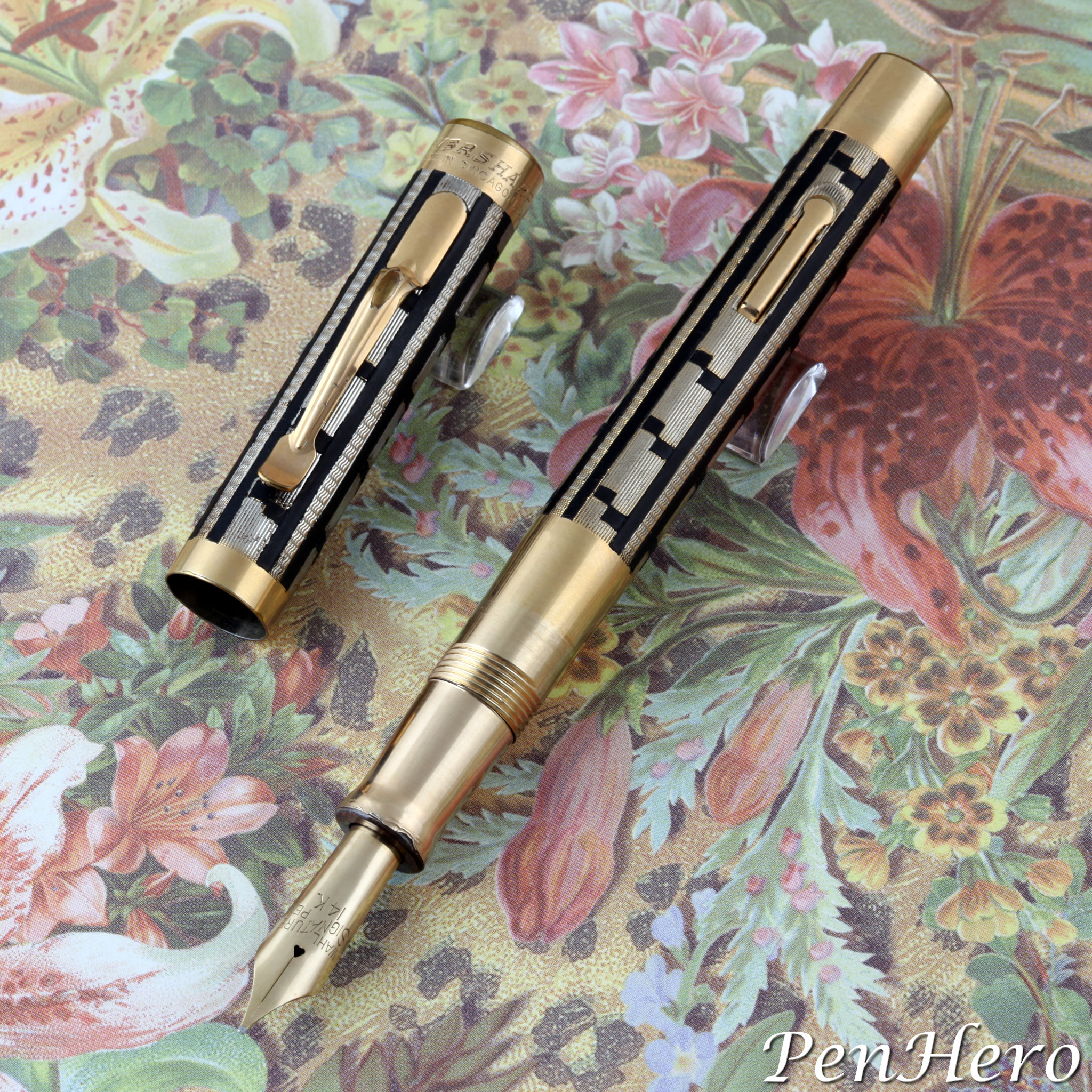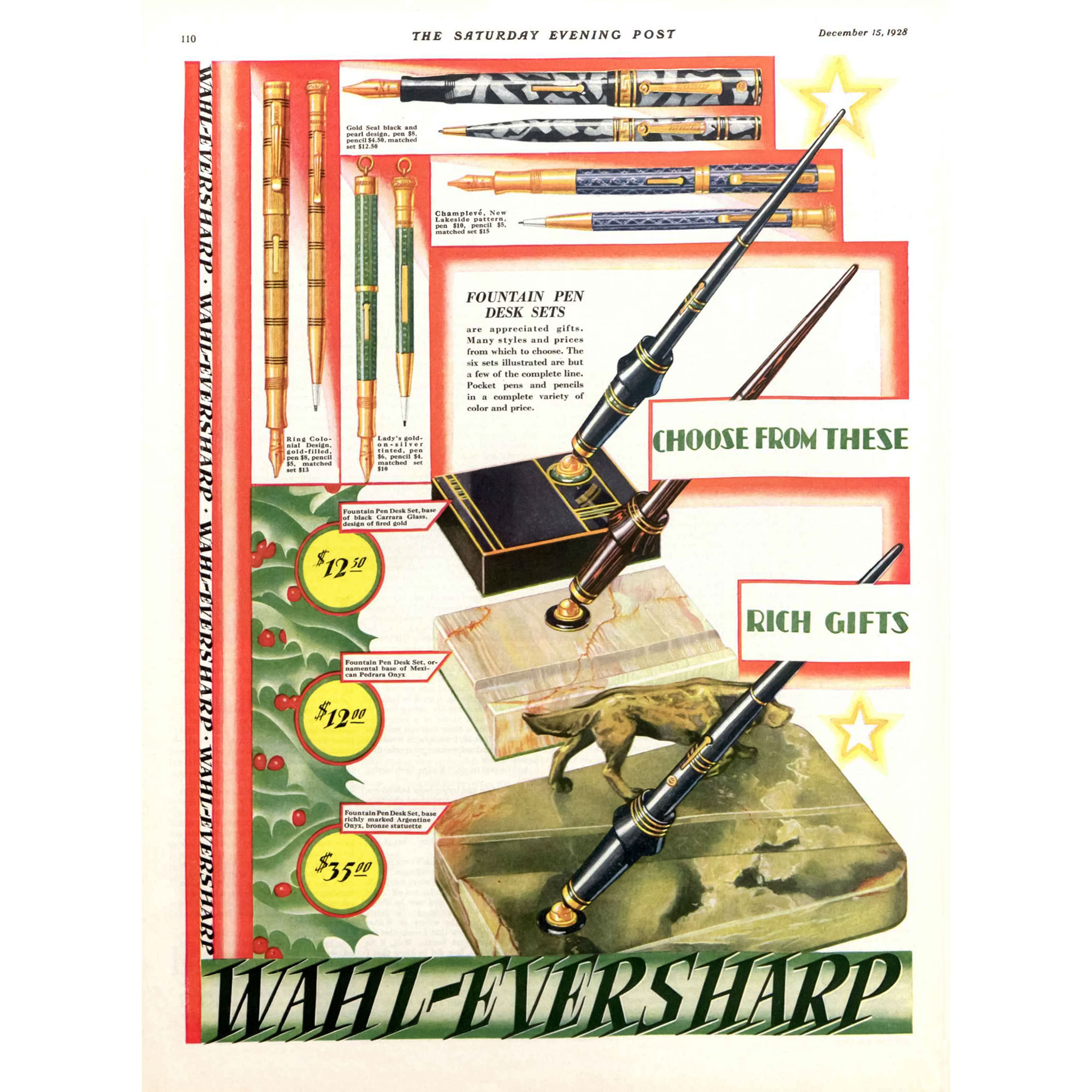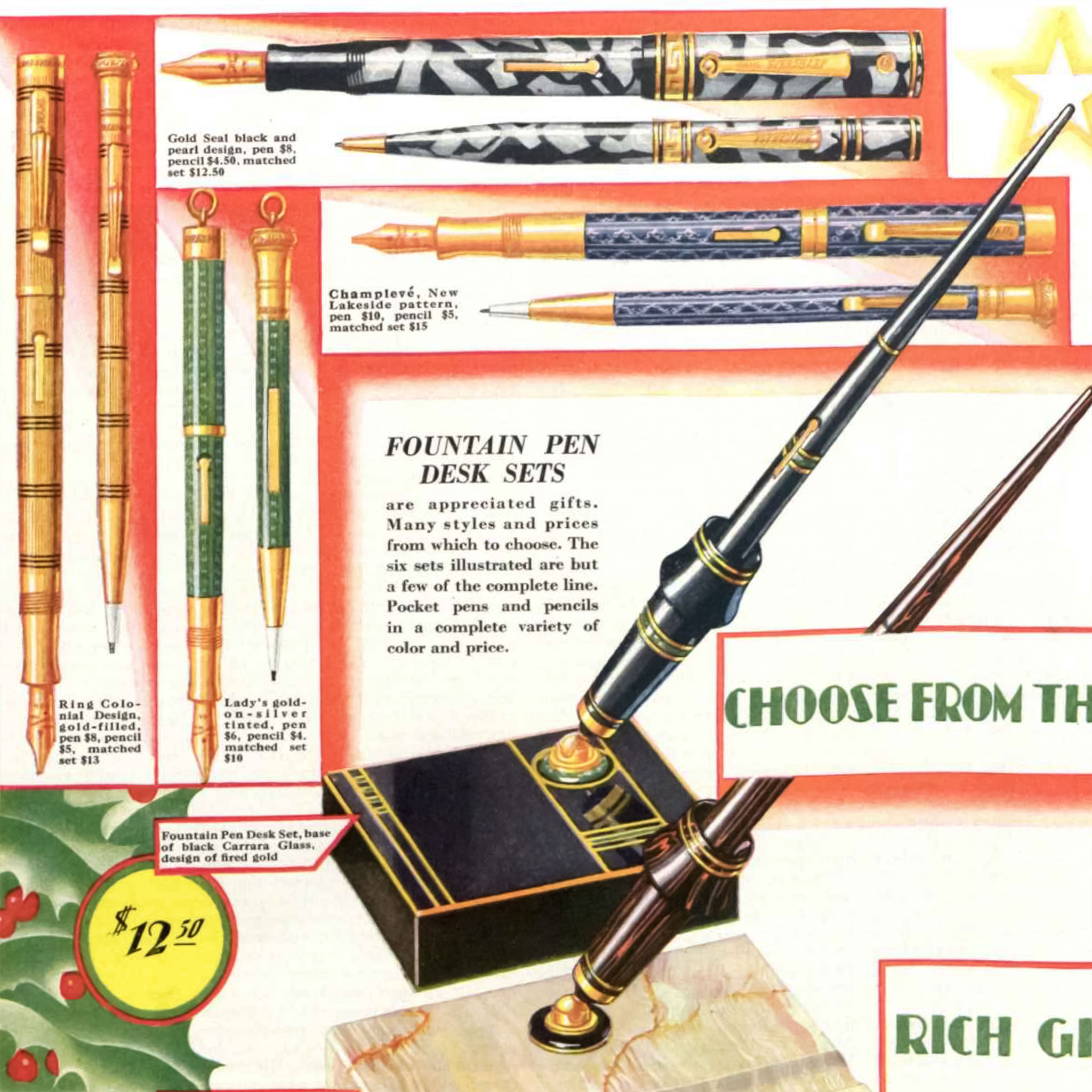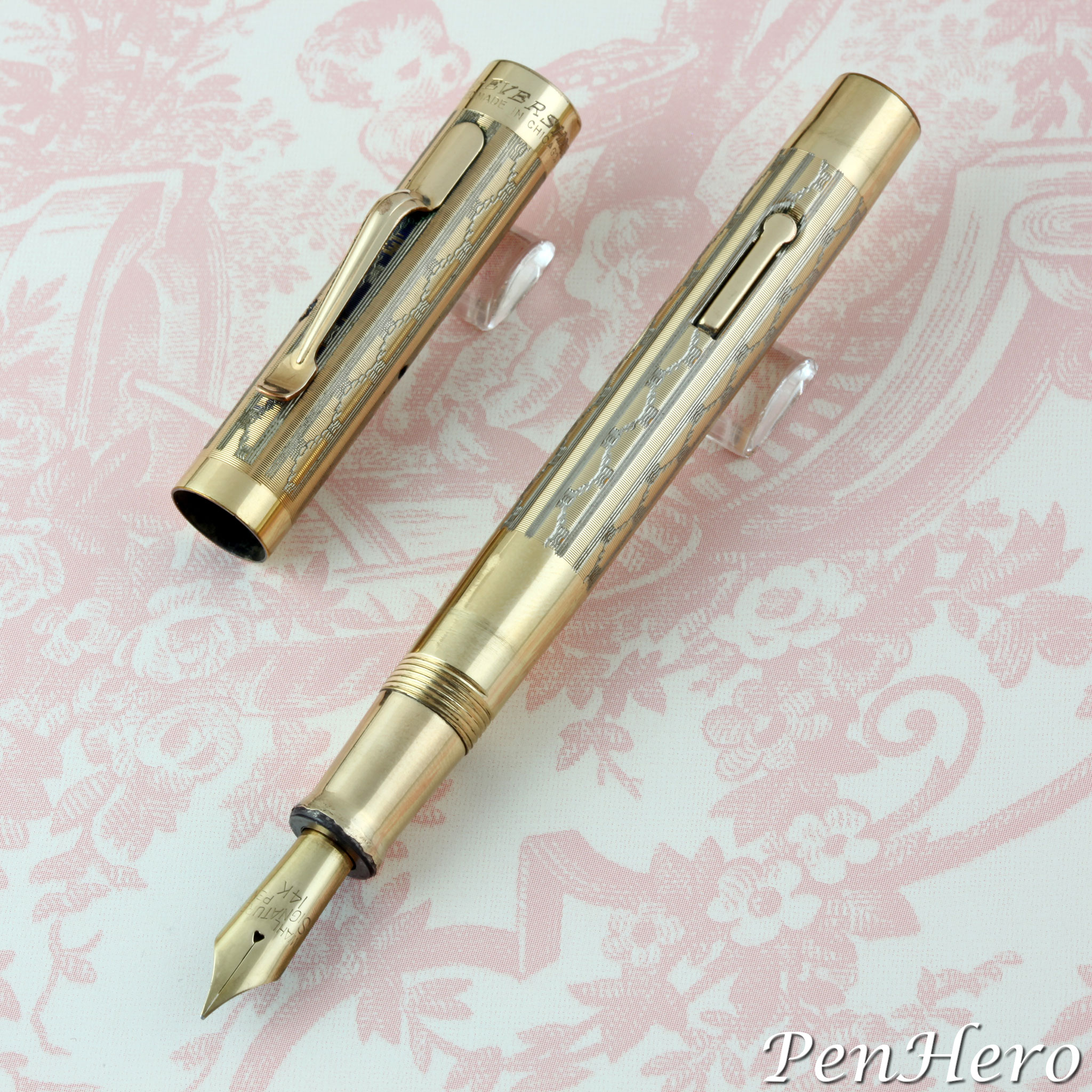Wahl “Champlevé” Pens c. 1928
by Jim Mamoulides, February 14, 2025
 Uncataloged Wahl "Champlevé" design with black enamel fountain pen c. 1928
Uncataloged Wahl "Champlevé" design with black enamel fountain pen c. 1928
Wahl with a French twist
The Wahl Company experimented with a decorative technique known as champlevé in the late 1920s and made several prototypes that can be seen in Jonathan Veley’s book, Eversharp, Cornerstone of an Industry. As he points out in his book, champlevé has a specific definition that Wahl did not completely adhere to.
 Advertisement in the December 15, 1928 Saturday Evening Post
Advertisement in the December 15, 1928 Saturday Evening Post
What is Champlevé?
Traditional champlevé is “a decorative technique that fuses a powdered glassy material into a recess in a metal surface through the application of heat,” according to the article “Champlevé Enameling” by Medill Higgins Harvey, Moira Gallagher, and Anne Grady of the Metropolitan Museum of Art. It was used by Tiffany & Co. and other high end jewelers to decorate metal objects such as teapots and cups.
The decoration steps begin with engraving or etching the design, recessed into the surface of the metal. The enamel frit, made from powdered glass, is mixed with a binder like methyl cellulose, and packed into the cut recess. The object is then placed in a kiln and fired, making the frit into a glassy enamel. Excess enamel is removed, by polishing or sanding as needed, and the final appearance is as if the enamel was inlaid into the surface of the metal. Translucent enamels will expose the engraved or etched design underneath.
Champlevé may look visually similar to cloisonné, but the technique differs significantly. Cloisonné designs are created by overlaying the metal object with a network of copper or bronze wires that outline each of the color fill areas, called cloisons (partitions), visually similar in concept to a stained glass window. The wires are soldered onto the surface so the object can be fired to cure the enamel. In both cases the enamel is packed into a recess created either by engraving / etching (champlevé) or by creating raised partitions (cloisonné) and after firing, the enamel is polished to create an even surface.
Wahl Champlevé models
 Detail from advertisement in the December 15, 1928 Saturday Evening Post
Detail from advertisement in the December 15, 1928 Saturday Evening Post
Wahl called the Lakeside engine turned design, which appears on 12 karat yellow gold filled fountain pens and pencils in 1928, champlevé, but is actually the opposite effect. The 4 15/16 inch long Wahl pen was $10 and the matching Eversharp pencil was $5. In the case of Lakeside, a production design consisting of repeating panels of a wave pattern overlaid with tinted blue enamel, the enamel is on the raised surfaces of the design, not in the cut areas. This example has most of the enamel worn off, except directly under the clip. This is the medium size model with a 14 karat gold Number 4 size nib. This nib is stamped WAHL SIGNATURE PEN 14K and the cap top is stamped WAHL - EVERSHARP over GOLD FILLED MADE IN CHICAGO, U.S.A.
 Wahl Lakeside design fountain pen 1928
Wahl Lakeside design fountain pen 1928
The second known "champlevé" pen (shown in the first photo of this article) is an uncatalogued Wahl design in 12 karat yellow gold filled on sterling silver with black enamel on the raised engraved surfaces. The design is repeating panels of straight lines with a set of two diagonal squares with a wave cut divider. The squares and bands are enameled in black. This example was restored with new enamel. The 4 15/16 inch long pen is the medium size model with a 14 karat gold Number 4 size nib stamped WAHL SIGNATURE 14K. The cap top band engraving WAHL EVERSHARP dates the pen to 1928. It's completely finished as would be expected on a production or final prototype pen. According to Jonathan Veley’s book, Eversharp, Cornerstone of an Industry, the design “turns up just often enough that it must have been marketed at least on a limited basis.” Perhaps these were custom ordered or small production pens and pencils.
Engraved and then enameled Wahl fountain pens and Eversharp pencils were only made for a short time, 1927-1928, are highly valued by collectors, and command premium prices when offered for sale. They represent some of the best work on metal pens by the Wahl Company and would be prized in any collection.
Acknowledgment
Thanks to Matthew Greenberger for his help with this model.
Reference Article on PenHero.com:
Want to learn more about Wahl Eversharp engine turned designs? Read the PenHero article, "Wahl Engine Turned Designs on Fountain Pens Guide 1919-1929."
References
Advertisement, The Saturday Evening Post, December 15, 1928, page 110
“Champlevé Enameling” by Medill Higgins Harvey, Moira Gallagher, and Anne Grady, August 24, 2022, © 2000–2025 The Metropolitan Museum of Art
“Chinese Cloisonné” Department of Asian Art, October 1, 2004, © 2000–2025 The Metropolitan Museum of Art
Eversharp, Cornerstone of an Industry by Jonathan A. Veley, Total Printing Systems, Newton, IL, Copyright 2024 by Jonathan A. Veley, pages 63, 104, and 109-110
Interact
Comments on this article may be sent to the author, Jim Mamoulides


